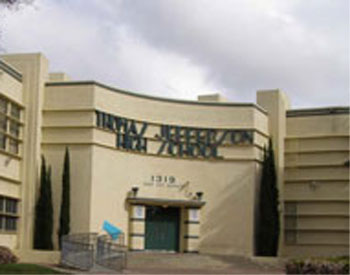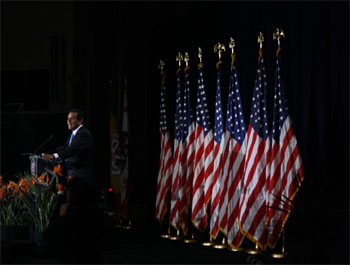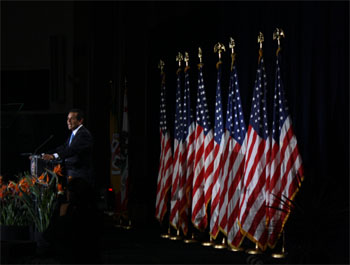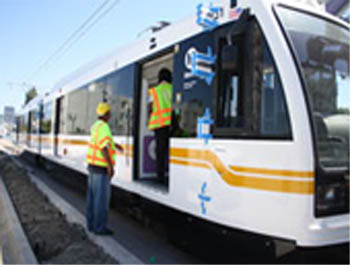Listen to an audio story by Annenberg Radio News:
—–
 “I hope this settles once and for all this ridiculous accusation that he was not born in the country and that he’s somehow less American than any other president we’ve ever had,” University of Southern California law professor Ariela Gross said.
“I hope this settles once and for all this ridiculous accusation that he was not born in the country and that he’s somehow less American than any other president we’ve ever had,” University of Southern California law professor Ariela Gross said.
Gross, a civil rights and legal history scholar, said the controversy regarding President Barack Obama’s birth is an example of racialized politics in society.
“I don’t think we would be seeing these accusations about President Obama if his father had come from Europe and rather than Africa,” Gross said. “I think there’s become quite an ugly tone to the kind of politics we’ve seen around this kind of conspiracy theory movement.”









 Los Angeles Mayor Antonio Villaraigosa spent most of his recent “State of the City” speech addressing education reform. Villaraigosa proposed getting rid of the “first in, last out” system, which refers to the order in which teachers are hired and eventually laid off or fired.
Los Angeles Mayor Antonio Villaraigosa spent most of his recent “State of the City” speech addressing education reform. Villaraigosa proposed getting rid of the “first in, last out” system, which refers to the order in which teachers are hired and eventually laid off or fired. Mayor Antonio Villaraigosa issued his sixth State of the City Address from a podium at Jefferson High School in South Los Angeles Wednesday.
Mayor Antonio Villaraigosa issued his sixth State of the City Address from a podium at Jefferson High School in South Los Angeles Wednesday. Los Angeles Mayor Antonio Villaraigosa promised to focus on education reform at the annual State of the City address on Wednesday.
Los Angeles Mayor Antonio Villaraigosa promised to focus on education reform at the annual State of the City address on Wednesday.  Homeless youth in Los Angeles are technologically wired. Their connections to the outside world are making their lives safer, according to a study by University of Southern California School of Social Work assistant professor Eric Rice. Rice received a three-year $2.1 million grant from the National Institute of Mental Health to study social networking among the homeless.
Homeless youth in Los Angeles are technologically wired. Their connections to the outside world are making their lives safer, according to a study by University of Southern California School of Social Work assistant professor Eric Rice. Rice received a three-year $2.1 million grant from the National Institute of Mental Health to study social networking among the homeless.  “This is just a slow walking speed type test,” said Jim Jasmin, Metro’s start-up manager. “When we get to an object, if it looks iffy, we’ll stop. We’ll move up slowly until we get to it and then check the measurements and go on.”
“This is just a slow walking speed type test,” said Jim Jasmin, Metro’s start-up manager. “When we get to an object, if it looks iffy, we’ll stop. We’ll move up slowly until we get to it and then check the measurements and go on.” Elaine Chew joined neuroscientist Aniruddh Patel, composer Peter Child and computer scientist Alexandre Francois Thursday night at the University of Southern California to examine the influence of language on music. The night featured scientific presentations, musical performances and interactive visualizations. The event was inspired by Patel’s research, which demonstrated that the music of British and French composers reflects the rhythm and intonation of their native languages.
Elaine Chew joined neuroscientist Aniruddh Patel, composer Peter Child and computer scientist Alexandre Francois Thursday night at the University of Southern California to examine the influence of language on music. The night featured scientific presentations, musical performances and interactive visualizations. The event was inspired by Patel’s research, which demonstrated that the music of British and French composers reflects the rhythm and intonation of their native languages.




